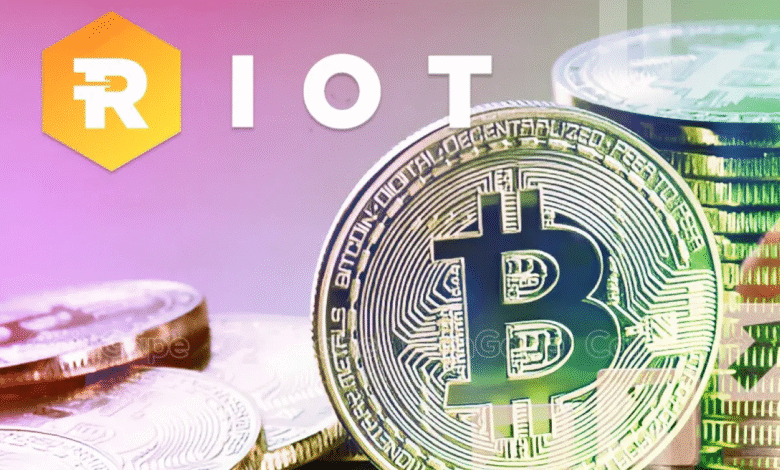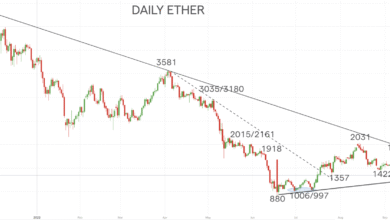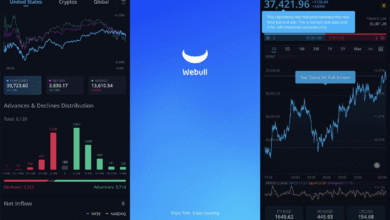Riot Platforms Bitcoin Sale Signals Shift in Mining Strategy

Riot Platforms bitcoin sale marks a significant shift in the company’s strategy as it has decided to sell 475 BTC in April 2025, ending a 15-month holding phase. This decision reflects the changing dynamics of the bitcoin market strategy, particularly as mining margins are squeezed in the wake of the latest halving. By offloading its mined cryptocurrency, Riot is strategically positioning itself to manage mining operation costs more effectively while continuing to support ongoing growth. The move not only signals a response to the current economic pressures within the crypto industry but also highlights the rise of crypto funding alternatives that miners are exploring to avoid excessive equity dilution. As Riot embraces this new approach, it joins other major players in the sector, making waves in the BTC sales impact on the market landscape.
In a bold maneuver, Riot Platforms has shifted gears by liquidating a substantial portion of its mined bitcoins, specifically selling 475 BTC in April. This shift away from their previous holding strategy signals a response to evolving challenges in the cryptocurrency mining landscape. With increased operational costs and strategic imperatives, Riot is adapting to the changing needs of the industry, much like other mining firms that are reevaluating their bitcoin retention policies. Such actions underscore a broader trend among miners looking for sustainable funding strategies to support their operations while navigating the tough post-halving market environment. This realignment aims not only to enhance liquidity but also to secure competitive footing in a rapidly changing economy.
Riot Platforms Bitcoin Sale: A Strategic Shift Amid Market Challenges
Riot Platforms’ decision to sell 475 BTC marks a pivotal moment in its operational strategy as it grapples with the tightening profit margins in the bitcoin mining sector. This sale, which generated about $38.8 million, reflects a broader trend where miners, in reaction to the recent halving, are adapting their approaches to sustain profitability. The halving event has historically impacted the availability and mining rewards, necessitating miners like Riot to alter their strategies in response to shifting market dynamics.
By offloading mined coins, Riot Platforms aims to secure necessary funding for its ongoing operations while maintaining its competitive edge. This move not only represents a significant departure from its previously held 100% HODL policy but also places the company in line with industry trends where many miners are increasingly focusing on cash flow strategies to navigate the harder economic climate. Riot’s adjustment in its bitcoin market strategy indicates a proactive stance in an evolving landscape.
Understanding the Bitcoin Market Strategy of Riot Platforms
Riot Platforms has strategically pivoted from a conservative bitcoin storage approach to a more aggressive market strategy, underscoring the complexities of the current bitcoin market. The decision to sell mined coins is a reflection of increasing operational costs synonymous with the crypto industry. As mining pairs yield lower returns post-halving, miners are compelled to rethink how they manage their assets and liquidate part of their holdings to fund ongoing operations and investments effectively.
The unfolding situation invites scrutiny into alternative funding approaches within the bitcoin mining sector. Riot’s monetization of its bitcoin holdings illustrates a shift in the market landscape, wherein companies are prioritizing immediate funding needs over long-term asset accumulation. This shift is prevalent among miners who face rising electricity and capital expenses. By employing a dynamic bitcoin market strategy, Riot Platforms is positioning itself for future success while navigating the challenges posed by fluctuating market conditions.
The Impact of BTC Sales on Mining Operations
Riot Platforms’ recent BTC sales are reflective of a broader trend affecting mining operations as companies adapt to harsher economic conditions. By opting to sell 475 BTC, Riot illustrates the direct correlation between bitcoin sales and the sustainability of mining operations in an environment where margins are increasingly squeezed. This tactical sale serves to bridge funding gaps while enabling supportive measures such as the hiring of essential personnel and investment in necessary equipment.
Moreover, the impact of btc sales extends beyond immediate cash inflows; it influences investor sentiment and market stability. A company that can effectively manage its mined bitcoin and maintain positive cash flow often enhances its credibility among investors. As miners like Riot navigate through dwindling profit margins, the impact on overall operational viability becomes increasingly linked to these strategic sales.
Exploring Crypto Funding Alternatives in Mining
As traditional funding methods become less viable amidst fluctuating market dynamics, Riot Platforms is diversifying its financing strategies, which includes securing a bitcoin-backed credit facility with Coinbase. Such moves signal a broader shift towards exploring crypto funding alternatives that can provide miners with additional financial flexibility. This diversification allows companies to mitigate the risks associated with relying on sales of mined bitcoin alone and helps stabilize operations against economic downturns.
Alternative financing in the realm of cryptocurrency can provide miners with enhanced liquidity, enabling them to hedge against market risks. These strategic financial avenues not only support operational costs but also allow miners to invest in scaling their operations during critical growth phases. Riot’s proactive approach indicates how miners can benefit from leveraging their bitcoin assets while exploring funding alternatives beyond conventional equity fundraising.
Riot Platforms’ Position Among Competing Miners
In a competitive landscape marked by various business strategies, Riot Platforms’ decision to sell mined bitcoin situates it alongside other mining firms like Cleanspark, which have also adapted their business models to a changing market. This commonality among industry players reflects the mining sector’s reaction to reduced profitability as a result of recent fluctuations in bitcoin prices and mining rewards. The decision taken by Riot illustrates a crucial operational strategy amid increasing competition among miners who are striving to remain viable in the market.
Conversely, not all miners are following suit; Marathon Digital, for instance, remains committed to retaining all its mined BTC, opting instead to seek external funding. This contrasts highlights the individualized strategic paths miners are taking under current market conditions, showcasing a significant divergence within the mining community. Riot’s willingness to adjust its strategy may provide a competitive edge as it navigates through these challenging times.
Riot Platforms’ Operational Strategy Post-Bitcoin Sale
Post-sale, Riot Platforms is recalibrating its operational strategy to align with ongoing financial needs without compromising its long-term trajectory. With 19,211 BTC still in its treasury, the company is balancing its mined bitcoin holdings against immediate liquidity demands. The shift from purely a HODL approach reflects a robust operational strategy aimed at minimizing shareholder dilution while ensuring that growth initiatives are adequately financed.
As Riot continues to analyze market conditions and operational costs, adapting its strategy will be key in the fluctuating bitcoin ecosystem. Staying agile will allow Riot to navigate potential future decreases in bitcoin prices while positioning the company for future acquisitions, technological advancements, and improved mining efficiencies as the crypto market continues to evolve.
Navigating Mining Operation Costs Amid Market Fluctuations
Mining operation costs have become a focal point for companies like Riot Platforms, especially in light of rising energy prices and resource allocation demands. The necessary shift in selling mined bitcoin to acquire funds demonstrates an acute awareness of these costs within a volatile market. By integrating this understanding into its operational framework, Riot is striving to optimize its mining output while addressing the financial strains that threaten profitability.
As the bitcoin mining landscape continues to evolve, it is critical for Riot to assess how to streamline operations effectively to minimize costs. This could include investing in more energy-efficient technologies or seeking renewable energy sources that can lower operational expenses over time. Navigating operational costs remains a central focus for Riot Platforms, especially as it adapts its strategies to remain competitive amid a seemingly endless cycle of market fluctuations.
Future Prospects for Riot Platforms in the Crypto Mining Sector
Looking forward, Riot Platforms’ ongoing adaptations signal a promising future within the crypto mining sector. As the company embraces both sales of its mined bitcoin and alternative funding mechanisms, it positions itself to capture new opportunities that may arise from market changes. The forward-thinking strategies, including leveraging a bitcoin-backed credit facility, suggest a vision that seeks to mitigate risks while establishing a firm foothold in the competitive environment.
Additionally, maintaining a significant bitcoin treasury allows Riot Platforms to harness potential future price appreciation, balancing short-term liquidity needs against long-term asset value. The company’s strategic decisions, against a backdrop of complex industry dynamics, showcase not only resilience but also an evolving understanding of how to thrive within the bitcoin mining ecosystem.
The Broader Impact of Bitcoin Mining Strategies on the Market
Riot Platforms and its contemporaries are part of an ongoing evolution in the bitcoin mining sector where operational strategies reflect a greater understanding of market demands. The collective decision to adjust business models, such as selling mined bitcoin, underscores a crucial adaptation that impacts not just individual firms but the larger market ecosystem as well. As miners collectively adjust their strategies, they influence market liquefaction and pricing, which resonates throughout the broader cryptocurrency landscape.
Furthermore, these strategic shifts affirm the interlinked nature of mining operations and market dynamics. By evaluating the consequences of btc sales on each firm’s performance, observers can gauge a more comprehensive view of market trends. Riot’s current maneuvers in response to operational challenges present a microcosm of how the broader industry might evolve as it battles both external market pressures and internal operational calculations.
Frequently Asked Questions
What prompted Riot Platforms to sell 475 BTC in April 2025?
Riot Platforms decided to sell 475 BTC in April 2025 as a strategic response to the tightening mining economics after the recent bitcoin halving. This sale, which marks the end of their 15-month HODL strategy, allows the company to fund ongoing operations and minimize shareholder dilution.
How does Riot Platforms’ bitcoin sale affect its mining operation costs?
The sale of 475 BTC provides Riot Platforms with essential liquidity that can help cover mining operation costs amid tightening margins in the bitcoin mining industry. By selling mined bitcoin, the company can reduce the dependency on external funding and bolster its financial strategy.
What is the impact of Riot Platforms’ bitcoin sale on the broader bitcoin market strategy?
Riot Platforms’ bitcoin sale reflects a broader market strategy being adopted by bitcoin miners in response to post-halving economics. As margins tighten, mining firms like Riot are shifting from HODLing all produced bitcoin to selling portions to manage operational costs, aligning with industry trends.
What alternatives does Riot Platforms have for crypto funding besides selling bitcoin?
Riot Platforms has secured a $100 million bitcoin-backed credit facility with Coinbase as part of its crypto funding alternatives. This provides them with additional financial flexibility while they navigate the complicated landscape of mining economics.
How does the sale of 475 BTC impact Riot Platforms’ long-term strategy?
By selling 475 BTC, Riot Platforms can continue its growth without excessive equity dilution, indicating a shift in their long-term strategy. The company remains well-positioned with 19,211 BTC still held, suggesting a commitment to maintaining substantial exposure to bitcoin while adapting to current market challenges.
| Key Point | Details |
|---|---|
| End of HODL Strategy | Riot Platforms sold 475 BTC in April 2025, marking the end of a 15-month period where it held all mined bitcoin. |
| Reason for Sale | The sale aimed to support ongoing operations and minimize shareholder dilution amidst tightening mining margins post-halving. |
| Sales Breakdown | Included 463 BTC mined in April and 12 BTC from its treasury, generating approximately $38.8 million. |
| Industry Response | Riot’s decision aligns with other miners like Cleanspark, who are also selling monthly outputs to cover operational costs. |
| Comparison with Competitors | Some miners, like Marathon Digital, continue their HODL strategy, relying on external funding rather than sales. |
| Future Strategies | Riot secured a $100 million bitcoin-backed credit facility with Coinbase, diversifying its funding options. |
| BTC Holdings | As of April 30, Riot still holds 19,211 BTC, indicating significant long-term exposure to bitcoin. |
Summary
Riot Platforms’ bitcoin sale marks a significant pivot in its strategy amidst a challenging mining environment. As the company offloads 475 BTC, it aligns itself with a trend where miners are increasingly adapting to the realities of post-halving economics. This strategic shift not only helps maintain operations but also minimizes shareholder dilution, showcasing Riot’s proactive approach to sustaining growth in a tightening market.




